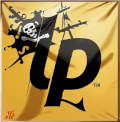this post was submitted on 04 Dec 2023
238 points (89.9% liked)
Piracy: ꜱᴀɪʟ ᴛʜᴇ ʜɪɢʜ ꜱᴇᴀꜱ
53911 readers
240 users here now
⚓ Dedicated to the discussion of digital piracy, including ethical problems and legal advancements.
Rules • Full Version
1. Posts must be related to the discussion of digital piracy
2. Don't request invites, trade, sell, or self-promote
3. Don't request or link to specific pirated titles, including DMs
4. Don't submit low-quality posts, be entitled, or harass others
Loot, Pillage, & Plunder
💰 Please help cover server costs.
founded 1 year ago
MODERATORS
you are viewing a single comment's thread
view the rest of the comments
view the rest of the comments



Unraid pro is expensive (compared to free DIY linux or Truenas for example) but it is extremely flexible and very easy to get started with.
Their free trial is very flexible though, and once set up and running most people will already be set and happy to pay for the licence.
Anyone not building a proper rackmount server is unlikely to need more than Unraid Plus. Which is 89 USD without a discount. Said discounts vary but are generally 20-30% or straight up 10 dollars, which gets plus down to 60-70 bucks. Unraid Pro I think is where you start getting into discussions of if this is a good decision, but we are looking at 90-110 for that.
Which is not nothing. But Plus undiscounted is about the price of a 4 TB drive. So if you can't afford a license you can't really afford to run a NAS with any degree of recoverability. At which point you are probably better mounting the drives as individual un-RAID'd drives and spreading files across a file system. Because, at that point, you can't recover from any failures anyway and this at least still guarantees access to your remaining files if one or more drives drop.
And if you are going big enough to need more than 12 drives in a single system (and I say this as someone who currently has 16 in his NAS...): That is when you should not be using unraid. Multiple physical servers set up as a ceph array and dealing with a lot of smaller zfs raids of varying sizes is the way to go but... you are losing a lot of storage to parity for something that likely isn't worth that level of redundancy. But you also start getting into a discussion of "what is my time worth" at that point because... Ceph is a mother fucker.
Well my main server is currently at 16 drives plus 2 SSDs, so 18 total counted for the licence, arranged as 12 drive unraid array and 4 drive ZFS, plus an appdata+vm disk and a general cache disk.
I'd like to go with Ceph eventually, because I think it's a solid platform, but multiple nodes and a heavier duty network backbone would be required to do that properly, also the extra disks required to protect a ZFS array of multiple Vdevs, which is safer and faster sure, but the costs are significantly higher than just buying an unraid licence.
I mean, I am doing the same thing. Do as I say, not as I do, and all that jazz.
But the main issue is that, with that many drives, the failure point starts to become the server itself as opposed to just the storage.